Topic
Topic Sentence:
- Exploring co-teaching approaches on culturally and linguistically diverse exceptional students and families (CLDE).
The following study entails the examination, evaluation, and discussion of the various co-teaching strategies used to teach foreign language to culturally and linguistically diverse exceptional students and families (CLDE). The co-teaching strategies will be carried out by two teachers. One teacher is professionally experienced in general education, while the other is experienced in teaching students with special needs. Even though both teachers are used to teaching students, they will also teach foreign languages to family members with special needs as well.
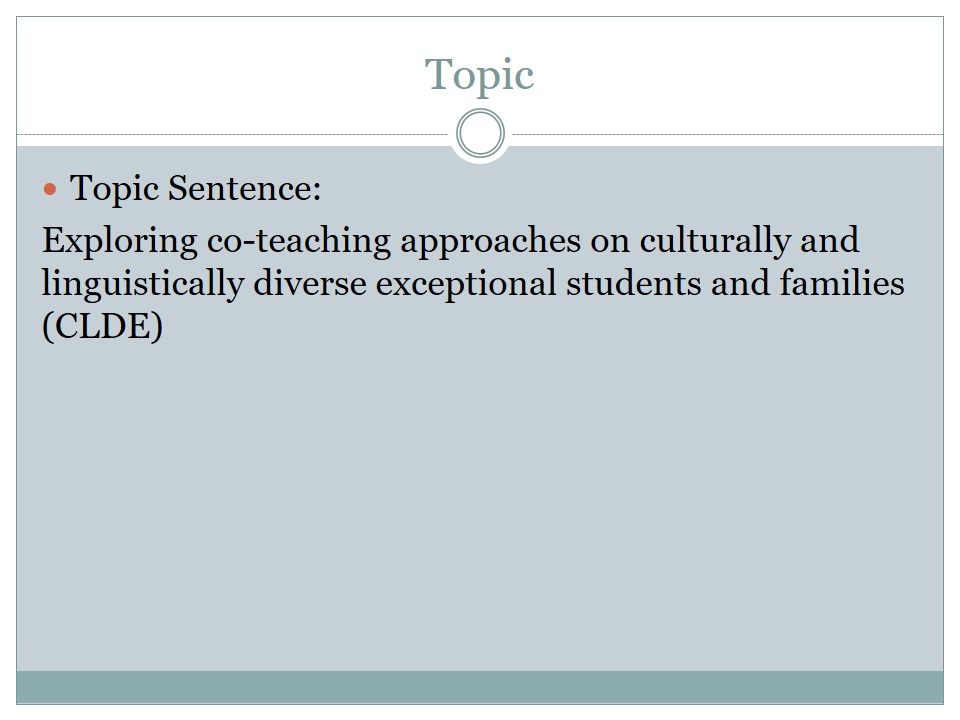
General Objective
- Purpose: To teach foreign languages to culturally and linguistically diverse exceptional students and families:
- To exhibit effective and proficient evaluation approaches for general teaching of foreign languages;
- Link theory to practical applications;
- Present special teaching and evaluation exercises for CLDE students.
- Expected participant results: Verify views concerning students with special needs:
- Find out ways classroom demographics and diversity are changing.
The general objective of the study is to teach culturally and linguistically diverse exceptional students and families foreign languages (Cartledge, Gardner, & Ford, 2008, p. 88). The research include showing productive and proficient evaluation approaches for teaching foreign languages by a special and general teacher; linking theories about CLDE students to practical applications; and present introductory teaching and evaluation exercises for CLDE students (Roache, Shore, Gouleta, & Butkevich, 2003, p. 312). The study expects to validate the beliefs concerning diverse students and figure out the ways classrooms’ diversities and demographics are changing.
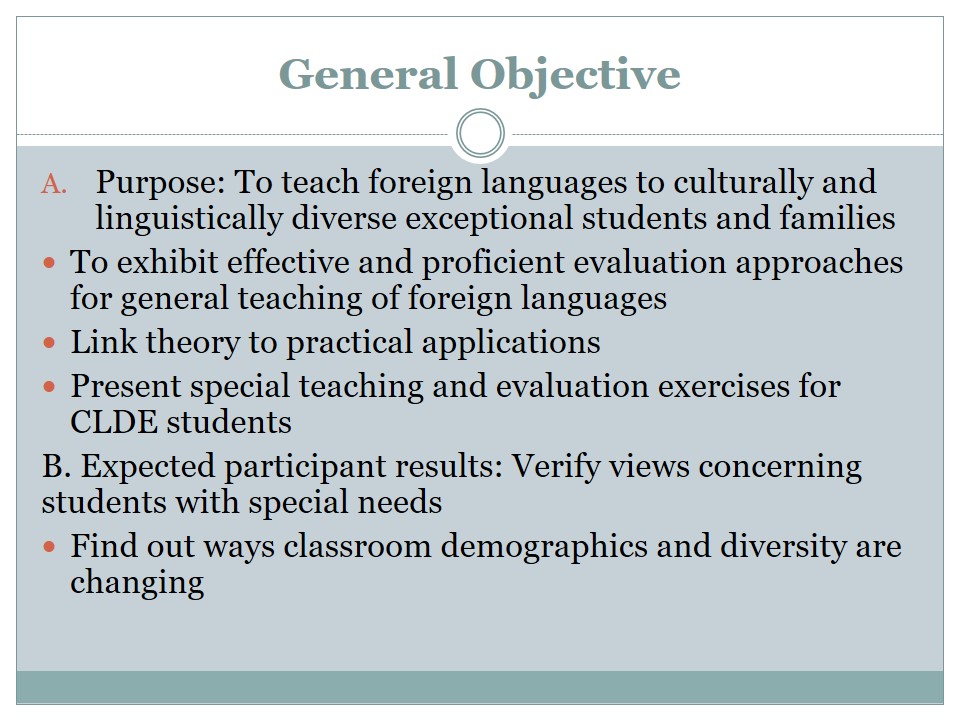
Specific Objective
- To teach CLDE students and families foreign languages using special ed and general ed teachers.
- To find out how family members with special needs learn.
- To find out the pace at which families with a hard time dealing with linguistic levels learn.
- To find out the number of students having diverse indigenous or custom languages.
The specific objective of the study is to teach CLDE students and families foreign languages using special ed and general ed teachers. The special ed teacher can figure out the number of participants originating from many ethnic backgrounds, those with gifts or bodily, sentimental, or learning disabilities, and those going through difficult linguistic levels. The general education teacher does not have to realize the number of participants with indigenous languages and different learning abilities (Cartledge, Gardner, & Ford, 2008, p. 90). However, it is important to acknowledge the identifies of these students because of analysis and interviews.
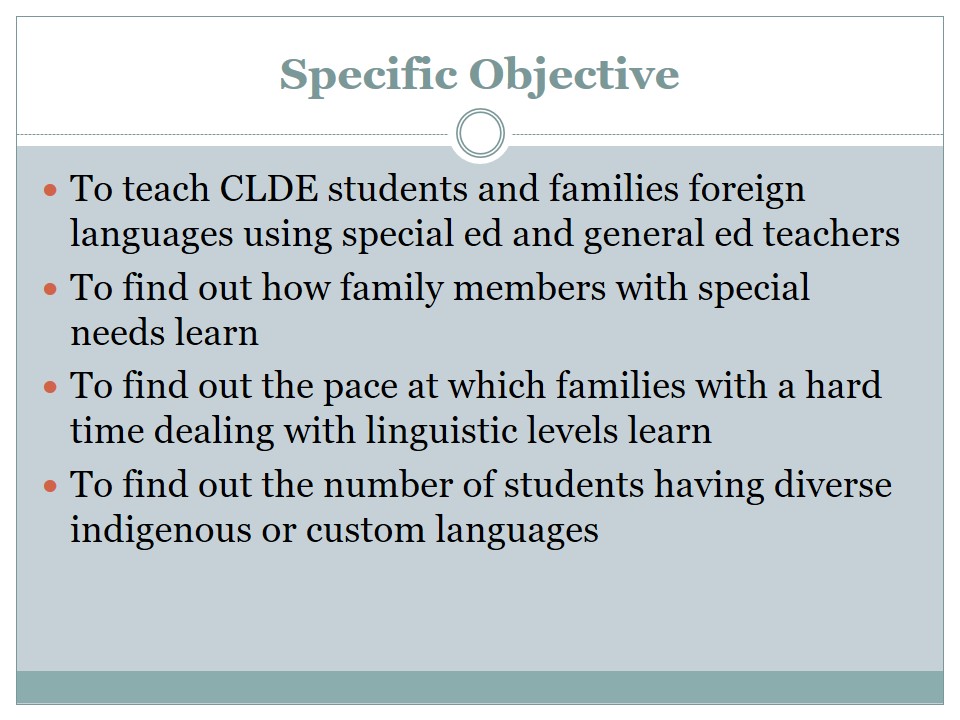
Description of Activities
- Workshop:
- Role playing;
- Dancing;
- Applied (Conventional) learning.
- Electronic, interactive:
- Logarithms, using calculators;
- Mathematics, using computers.
- Electronic, non-interactive:
- Independent pattern games, using computers.
Activities that will take place in the workshop include role playing, dancing, and normal learning. Students with special needs will switch roles with their normal children from other families, their favorite characters, role models, or animals and play (Roache, Shore, Gouleta, & Butkevich, 2003, p. 329). Children from participating families will also dance to children’s music and the trainer will observe their behavior. Interactive, electronic activities that the students will engage in include solving logarithms and mathematics using calculators and computers. Electronic activities that are non-interactive include pattern games played from the computer.
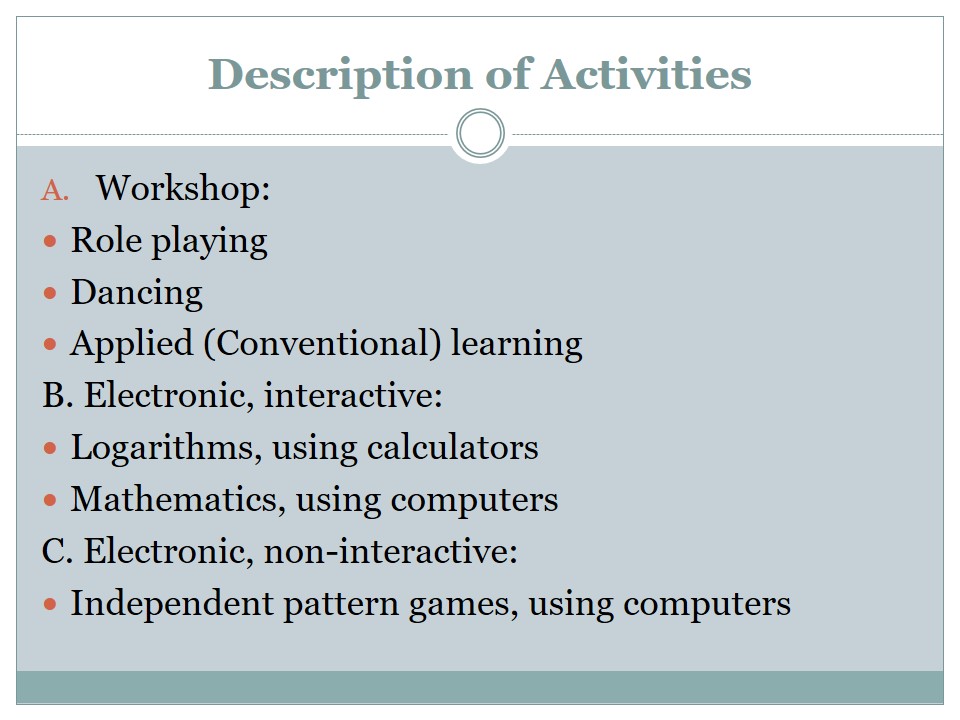
Participant Evaluation
- Participant evaluation: Questions to be asked:
- Instructional approaches that worked effectively;
- Evaluation practices that worked effectively;
- Approaches that exposed the multiple intelligences of the special children;
- Component evaluation: Questions to be asked:
- How the teaching strategies can be incorporated into a lesson;
- Ways families crafted to show their participation;
Participant evaluation will be divided into two parts: the participant and component evaluation. The participant evaluation includes the determination of the efficiency of the instructional approaches, evaluation exercises, and strategies used for exposing the multiple intelligences of the students with special needs (Grassi, & Barker, 2009, p. 63). The component evaluation will include questions about the integration of teaching approaches during the lessons, and ways the families crafted methods of showing their level of participation during the lessons.
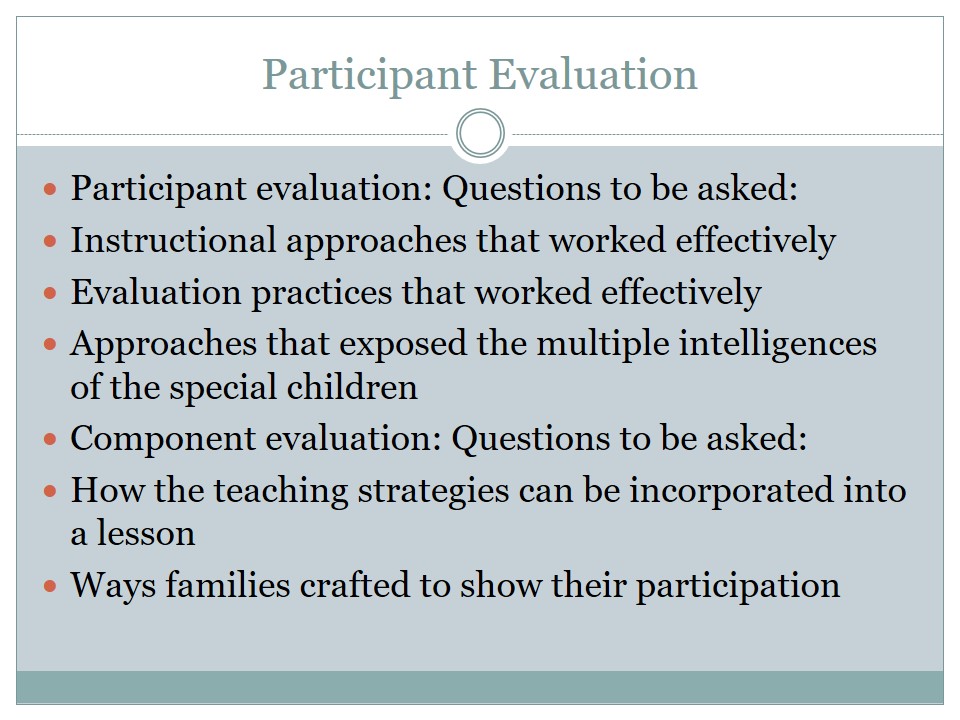
Follow-Up Plan
- Visual recordings of the students and families during lessons.
- Organized of student and family records.
- Organized interviews with the family members.
- Separate and organized interviews with special and general education teachers.
- Participants profile.
The follow-up plan for the study entails video recordings of the participants during lessons, making organized minutes of the participants, organized interviews with the participants and their trainer, and a portfolio of the participants (Roache, Shore, Gouleta, & Butkevich, 2003, p. 330). The portfolio of the participants is the most vital part of the follow-up plan because it is an outline of the participants’ performance during the study.
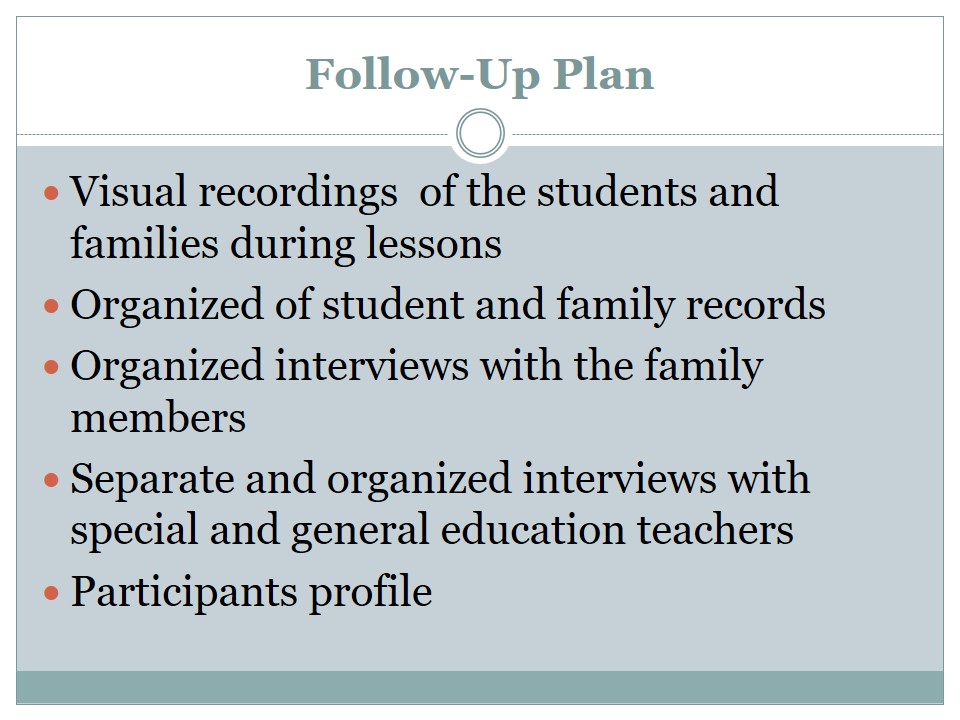
References
Cartledge, G., Gardner, R., & Ford, D. Y. (2008). Diverse Learners with Exceptionalities: Culturally Responsive Teaching in the Inclusive Classroom. California: Pearson Education, Limited.
Grassi, E. A., & Barker, H. B. (2009). Culturally and Linguistically Diverse Exceptional Students: Strategies for Teaching and Assessment. Boston: SAGE Publications.
Roache, M., Shore, J., Gouleta, E., & Butkevich, E. (2003). An Investigation of Collaboration Among School Professionals in Serving Culturally and Linguistically Diverse Students with Exceptionalities. Bilingual Research Journal: The Journal of the National Association for Bilingual Education, 27, (1).